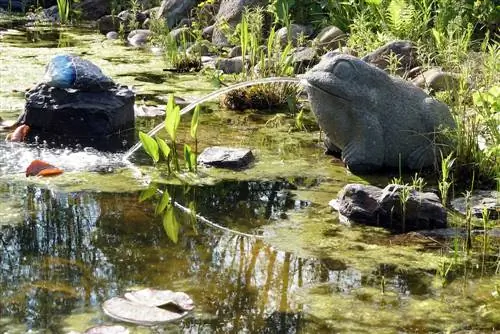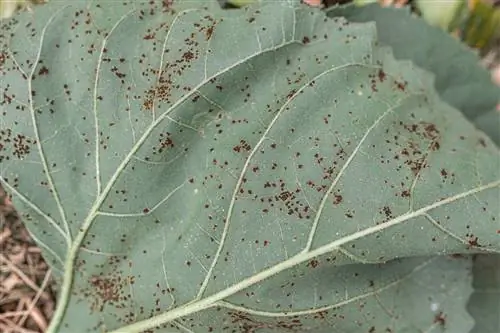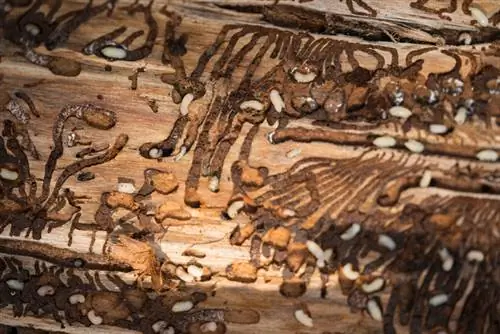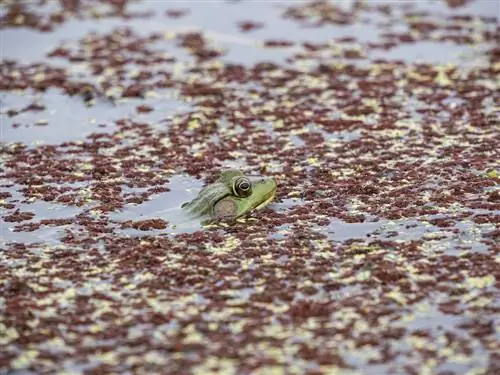- Author admin [email protected].
- Public 2023-12-16 16:46.
- Last modified 2025-01-23 11:22.
Various types of algae grow in the pond. These must be recognized in order to find the best possible elimination method. However, the different algae have specific properties that provide information about the respective species. This makes removing the growth much easier.
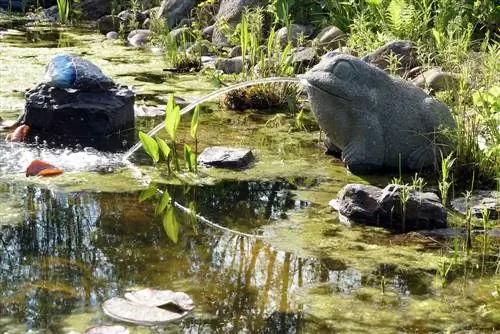
Which types of algae commonly occur in ponds and how do you recognize them?
The five most common types of algae in ponds are floating algae, blue-green algae, bearded algae, filamentous algae and brown algae. They can be recognized by their respective color and structure: floating algae turn the water green, blue-green algae are dark and slimy, beard algae appear reddish, thread algae have a green thread structure and brown algae are visible on the pond walls.
Which types of algae are most common in ponds?
Many different types of algae can occur in domestic ponds. However, there arefive varieties which can be found very often. The following algae are most commonly found in ponds:
- Floating algae
- Blue-green algae
- Bearded Algae
- Thread algae
- Brown algae
However, the growth of floating algae and thread algae in the pond is considered to be extremely widespread. These two varieties particularly often and happily overgrow the garden pond. They are very easy to recognize and can then be removed using gentle means. Cheap home remedies are best suited for this.
How do the different types of algae form in the pond?
When algae such as floating algae form in the pond,multiple causes are usually responsible. Flower pollen or contamination of the pond water are often the main cause of algae infestation. Fish leaves and dead plant parts out of the pond immediately. You should also check the pH value (€4.00 on Amazon) of the water at regular intervals. This must always be in a range between 7.00 and 7.40. If the value deviates, algae formation is very likely. Excessive sunlight also affects the quality of the pond water.
How can you recognize the different types of algae in the pond?
The different types of algae can be identified by theirunmistakable color and structure.
- Floating algae are small and float on the surface of the water. These green algae turn the water green.
- Blue-green algae, on the other hand, are dark to black and have a slimy structure.
- Beard algae can be recognized by their beard-like appearance. These cause a reddish discoloration of the pond water.
- Thread algae are particularly easy to distinguish from other algae due to their green color and their thread-like structure.
- Brown algae in the pond are mainly seen on pond walls and are brown in color.
Tip
The best home remedies for the different types of algae in the pond
If you notice algae in your pond, you should take quick action against the growth. However, you do not have to resort to chemical and environmentally damaging agents. Simple home remedies are also used against algae. Vinegar is considered an extremely helpful and thorough remedy. One liter is enough for around ten cubic meters of water. In addition, both washing soda, baking powder and vitamin C are considered efficient.

